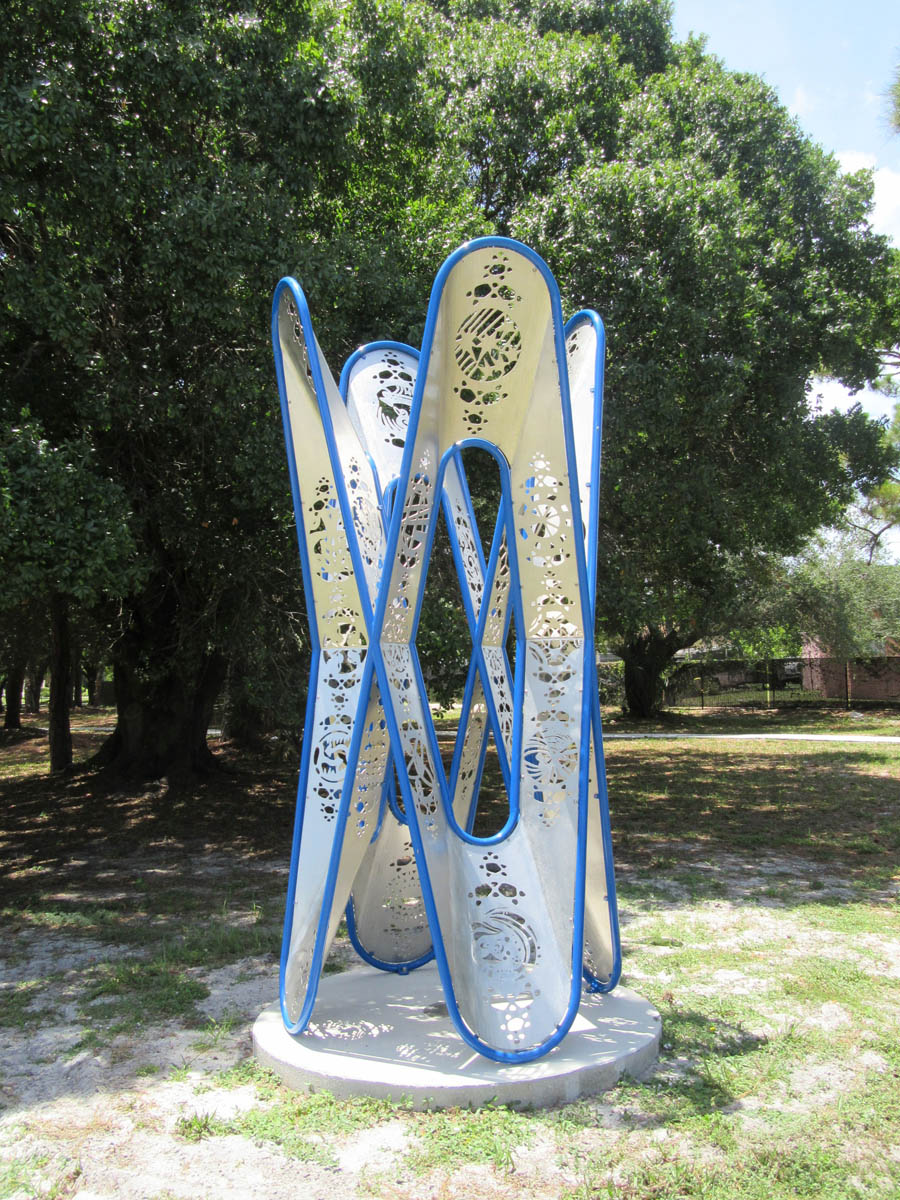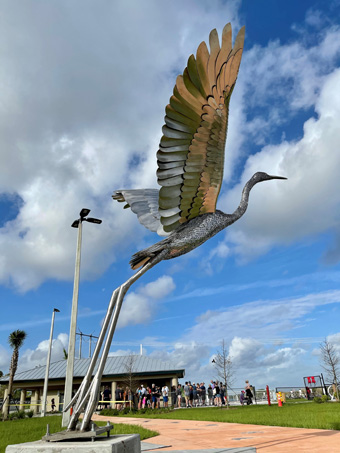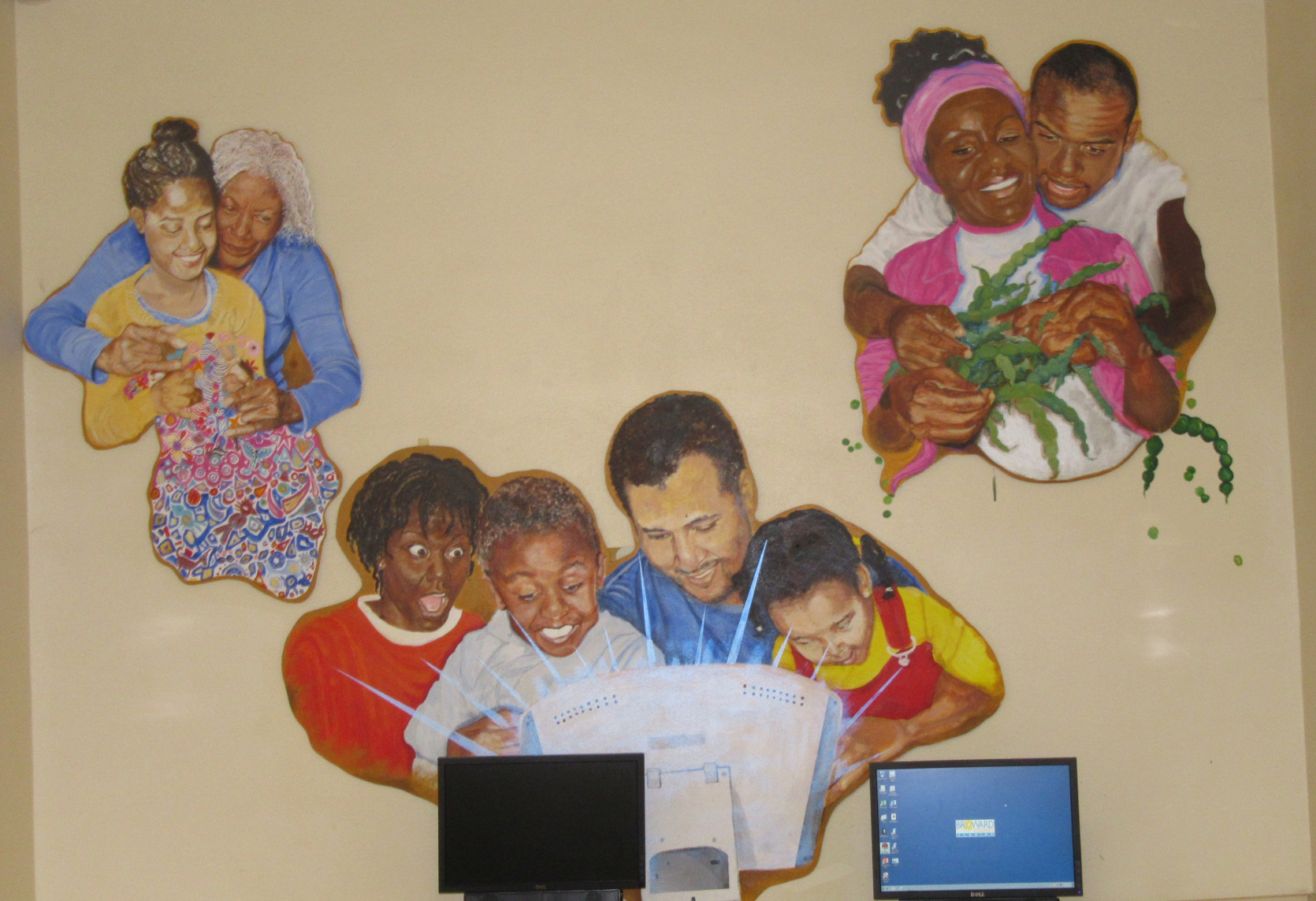Public Art and Design in Broward County Parks
The Broward County Public Art and Design program, established in 1976 as Art in Public Places, allocates two percent of the total new construction budget for Broward County governmental facilities for commissioned artists to provide design expertise and to create artworks within a broad range of capital improvement projects. The program contributes to the enhancement of urban design through the creation of commissioned works of art that create a sense of place; that improve the visual environment for the citizens of Broward County; and that advance the missions of the county departments where the projects reside. A dynamic interaction between selected artists and interested constituent groups during the design stages of the projects results in the artworks you find in public places throughout the county.
Here are the Broward County parks that currently feature Public Art and Design projects:
The plaza sits between the park administration building and the Mangrove Hall. Federighi's integrated work encompasses paver design for the plaza and four coral rock benches with bronze legs that simulate mangrove roots. “The benches were designed to reflect man’s involvement with the site,” says the artist. “We sit with Nature.”
Whirls and Swirls and a Vortex on Water (2008) by Alice Aycock
The Pennsylvania-born, New York-based artist, known worldwide for her large, semi architectural industrial sculptures, received a commission in 2004 to design a water feature at the State Road 7/U.S. 441 entrance to the park. The metal, steel, concrete, and acrylic sculpture hovers slightly above water in an elliptical-shaped pool. Massive metal ribbons spiral around an acrylic sphere that has an internal sculptural element, alongside a metal vortex that delves below the water's surface. Integrating nature, science, art, and technology, the artwork's composition refers to the dynamic and tumultuous weather patterns in South Florida and the gravitational forces present on the earth and throughout the solar system, illustrating the expanding universe and underwater marine life.

As One (2021) by Blessing Hancock
An illuminated artwork of light, shadow, and color that serves as an icon for Sunrise Boulevard and surrounding communities. The site-specific sculpture
takes its inspiration from two symbols used in Kente cloth designs, merged to combine two sets of complementary ideas: peace, serenity, and calm, and
safety, security, and the home. Light is a connective thread that runs through Hancock's work, and the artist makes a point of meeting with community residents, teachers, civic leaders, and local historians to gain a clear understanding of the importance of cultural and personal expression with the community she hopes to illuminate through her art.

Everglades Holiday Park
Flight Path (2022) by Jeffrey Reed and Jennifer Madden
The $200,000 art project includes a stainless-steel sculpture of a half-ton, 12-foot-tall great egret; a covered concrete pathway with 20 life-size stainless steel indigenous bird silhouettes embedded into the concrete surface; and an educational plaque with color pictures and descriptions of the birds included in the pathway's silhouettes.
Fern-Lore Guardian (1994) by Jerome Meadows
This pair of sculptures, easily visible from an elevated boardwalk, stands out in the woods, not far from the park’s community center. Each is made of cedar wood and bronze. The artist’s statement explains that the piece is “a site-specific work commissioned expressly for the Fern Forest Nature Center. The sculpture draws visual and conceptual reference from seeds and plants, juxtaposing organic wood forms with metal.”
The Word Garden (2000) by Angela Curreri & Rick Yasko
This Broward-based pair of artists designed a colored, patterned concrete walkway encircling the park’s playground. Along the walkway, they placed seven colored concrete benches engraved with the Seven Principles of Kwanzaa in both Swahili and English, along with seven inspirational quotes, each related to a specific principle. According to their statement, the artists “met with the Franklin Park community many times during their five years working in this neighborhood. The community repeatedly expressed the desire for the project to be both inspirational and educational.”
Island Garden (2009) by Lorna Jordan
One of the artist's concerns is the idea of the garden as a framework for enhancing habitat, and in that context this work heightens the visitor's experience of the nature center's topography. Pathway mosaics refer to the sedimentary layers that have created the aquifer's layers of limestone, sand, and sandstone; pools and planters reveal the interaction between water and plants; and benches and a trellis system provide a contemplative place to experience shade and the coolness of water. Jordan, who has a B.A. from the University of Virginia at Charlottesville, has led teams for several award-winning projects of similar budget and scope that blur the boundaries among sculpture, ecology, architecture, and theater.
Pillars of the Community (1997) by Chisseko Kondowe
The artist involved the Delevoe Park community in the design of this artwork by selecting 84 names of community leaders past and present to be inscribed on his hand-made tiles, which adorn 42 pillars of the community center. Four tiles per pillar resulted in 168 tiles, along with 104 tiles for the two park gates. The goal, according to Kondowe’s artist’s statement, was “to capture the tranquility of the environment at Delevoe Park.”

Roosevelt Gardens Park
Science Project/Layup Shot/Rock Solid/Stringbeans (2013) by Cheryl Foster
A multipiece artwork located in the computer room and lobby of the park's community center, in the form of a series of tableaux that illustrate desired themes such as education, family values, diversity, sharing, learning, parents teaching and sharing with children, and strong male presence. The paintings are displayed above eye level and appear to float on the walls.
Metamorphosis (2002) by Raymond Olivero
Upon entering the front door to the nature center’s Monarch Interpretive Center exhibit hall, visitors pass through a pair of glass fresco doors featuring a colorful butterfly wing motif. The mosaic floor illustrates the butterfly’s flight pattern, which leads to different sections of the hall. This site-specific,
integrated
artwork fuses nature with art and design. “I have taken the flight pattern of the butterfly as the basis for the pathway,” the artist says in a statement. “I chose the butterfly not only for its unique flight pattern, but also because it is featured at the park, particularly at its entrance area….I also chose the butterfly motif for the butterfly’s innate variety and beauty as well as its metamorphosis, which makes it one of nature’s mysteries and secrets. In short, the butterfly offers the greatest degree of aesthetic and metaphorical possibilities.”